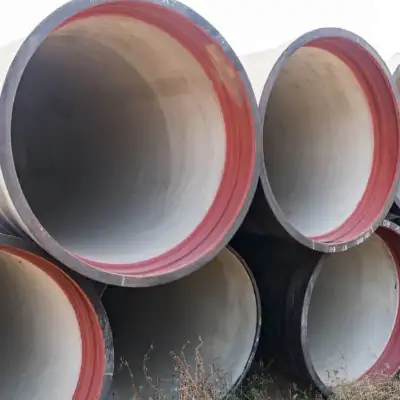The 80-55-06 ductile iron equivalent refers to a high-strength grade of nodular cast iron, widely used in automotive, hydraulic, and industrial components for its balance of tensile strength (80 ksi), yield strength (55 ksi), and elongation (6%). Understanding its hardness and machinability is critical for material selection, tooling design, and manufacturing efficiency. This grade typically exhibits a Brinell hardness (HB) of 170–230, depending on heat treatment and microstructure, with pearlitic matrices offering higher hardness than ferritic ones.

1. Introduction to 80-55-06 Ductile Iron
80-55-06 ductile iron, also known as ASTM A536 Grade 80-55-06, is a high-strength cast iron alloy characterized by its nodular graphite structure. This composition imparts enhanced mechanical properties compared to traditional gray cast iron, making it suitable for demanding applications.
2. Chemical Composition
The typical chemical composition of 80-55-06 ductile iron is as follows:
| Element | Percentage (%) |
|---|---|
| Carbon | 3.50 – 3.90 |
| Silicon | 2.25 – 3.00 |
| Manganese | 0.15 – 0.35 |
| Sulfur | ≤ 0.025 |
| Phosphorus | ≤ 0.08 |
| Magnesium | 0.03 – 0.05 |
These elements contribute to the alloy’s strength, hardness, and machinability.
3. Mechanical Properties
80-55-06 ductile iron exhibits the following mechanical properties:
-
Tensile Strength: Minimum 80,000 psi (552 MPa)
-
Yield Strength: Minimum 55,000 psi (379 MPa)
-
Elongation: Minimum 6%
-
Hardness: Typically ranges from 180 to 270 Brinell Hardness (HB)
These properties make it comparable to low-alloy steels in terms of strength and ductility.
4. Microstructure
The microstructure of 80-55-06 ductile iron consists of nodular graphite embedded in a matrix of ferrite and pearlite. The proportion of pearlite enhances the material’s strength and wear resistance. The nodular graphite provides improved machinability and damping characteristics.
5. Equivalent Grades
80-55-06 ductile iron corresponds to several international standards:
-
SAE: D5506
-
DIN: GGG-60
-
ISO: 500-7
-
EN: GJS-600-3
-
GB: QT600-3
These equivalents facilitate international sourcing and standardization in engineering applications.
6. Hardness and Heat Treatment
80-55-06 ductile iron can undergo heat treatment processes to enhance its hardness. For instance, oil quenching from 1600°F (885°C) can achieve a minimum Rockwell C hardness of 50 on the outer surface. The interior hardness may be slightly lower due to the presence of larger graphite nodules.
| Heat Treatment Method | Surface Hardness (Rockwell C) |
|---|---|
| Oil Quenching | ≥ 50 |
This heat treatment improves wear resistance and extends the service life of components.
7. Machinability
80-55-06 ductile iron offers excellent machinability, often outperforming steel in terms of cutting speeds and tool life. The graphite nodules act as internal lubricants, reducing friction and wear during machining operations.
| Machining Parameter | 80-55-06 Ductile Iron | Steel |
|---|---|---|
| Cutting Speed | Higher | Lower |
| Tool Life | Longer | Shorter |
| Surface Finish | Excellent | Good |
These advantages lead to cost savings and increased productivity in manufacturing processes.
8. Applications
80-55-06 ductile iron is utilized in various industries for components such as:
-
Automotive parts (e.g., gears, crankshafts)
-
Hydraulic components (e.g., pumps, valves)
-
Industrial machinery (e.g., housings, frames)
-
Agricultural equipment
-
Construction machinery
Its combination of strength, machinability, and cost-effectiveness makes it a preferred material in these applications.
9. Frequently Asked Questions (FAQs)
Q1: What is the tensile strength of 80-55-06 ductile iron?
The tensile strength of 80-55-06 ductile iron is a minimum of 80,000 psi (552 MPa). This high tensile strength makes it suitable for applications requiring robust mechanical performance.
Q2: How does the hardness of 80-55-06 ductile iron compare to other materials?
80-55-06 ductile iron typically has a Brinell Hardness ranging from 180 to 270 HB. This hardness is comparable to low-alloy steels, offering a balance between strength and machinability.
Q3: Can 80-55-06 ductile iron be heat treated to increase hardness?
Yes, 80-55-06 ductile iron can undergo heat treatment processes such as oil quenching from 1600°F (885°C) to achieve a minimum Rockwell C hardness of 50 on the surface. This enhances its wear resistance.
Q4: What are the equivalent grades of 80-55-06 ductile iron in other standards?
80-55-06 ductile iron corresponds to several international standards, including SAE D5506, DIN GGG-60, ISO 500-7, EN GJS-600-3, and GB QT600-3. These equivalents facilitate international sourcing and standardization.
Q5: What industries commonly use 80-55-06 ductile iron?
80-55-06 ductile iron is used in various industries, including automotive, hydraulics, industrial machinery, agriculture, and construction, for components such as gears, pumps, housings, and frames.
Q6: How does the machinability of 80-55-06 ductile iron compare to steel?
80-55-06 ductile iron offers superior machinability compared to steel. The graphite nodules in its microstructure act as internal lubricants, allowing for higher cutting speeds, longer tool life, and better surface finishes.
Conclusion
80-55-06 ductile iron is a versatile and high-performance material that offers a combination of strength, hardness, and excellent machinability. Its equivalent grades across various international standards make it a globally recognized choice for demanding applications.
